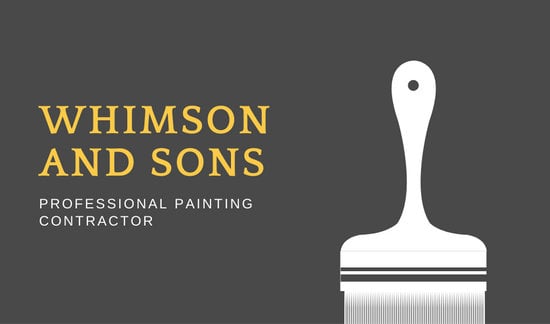Making Best Use Of Little Areas: Painting Strategies To Develop The Impression Of Area
Making Best Use Of Little Areas: Painting Strategies To Develop The Impression Of Area
Blog Article
Authored By-
In the realm of interior decoration, the art of optimizing small areas through critical painting methods provides an extensive chance to transform confined areas into aesthetically extensive sanctuaries. The cautious choice of light shade combinations and clever use of optical illusions can function marvels in creating the impression of space where there appears to be none. By using these techniques judiciously, one can craft an environment that resists its physical borders, welcoming a feeling of airiness and openness that hides its real measurements.
Light Color Selection
Picking light colors for your painting can considerably improve the illusion of space within your artwork. Light colors such as soft pastels, whites, and light grays have the capacity to reflect even more light, making a space feel even more open and ventilated. These colors produce a feeling of expansiveness, making walls appear to recede and ceilings appear greater.
By utilizing light shades on both walls and ceilings, you can obscure the borders of the area, giving the impression of a bigger location.
In addition, light shades have the power to bounce natural and man-made light around the room, lightening up dark corners and casting fewer darkness. This impact not just contributes to the overall roomy feel yet also creates a more welcoming and vibrant atmosphere.
When selecting please click the up coming website page , think about the touches to ensure harmony with various other elements in the room. By purposefully incorporating light colors right into your painting, you can transform a constrained space into a visually bigger and a lot more inviting setting.
Strategic Trim Paint
When aiming to produce the illusion of space in your painting, calculated trim paint plays a crucial function in defining borders and boosting deepness understanding. By strategically selecting the shades and surfaces for trim job, you can efficiently manipulate exactly how light communicates with the room, ultimately affecting how big or little a room really feels.
To make a room show up larger, consider repainting the trim a lighter shade than the walls. commercial repainting services produces a feeling of depth, making the wall surfaces decline and the room really feel even more extensive.
On the other hand, repainting the trim the exact same color as the wall surfaces can develop a smooth appearance that obscures the sides, providing the illusion of a continuous surface and making the boundaries of the room much less defined.
Furthermore, utilizing a high-gloss coating on trim can mirror extra light, further enhancing the perception of space. On the other hand, a matte finish can take in light, producing a cozier ambience.
Meticulously thinking about these information when painting trim can dramatically impact the overall feel and viewed dimension of an area.
Visual Fallacy Techniques
Utilizing visual fallacy techniques in paint can effectively modify perceptions of deepness and room within a provided setting. One typical strategy is making use of slopes, where shades transition from light to dark tones. By using a lighter color on top of a wall surface and slowly darkening it towards the bottom, the ceiling can show up greater, creating a feeling of vertical room. On the other hand, painting the floor a darker color than the walls can make it feel like the area extends further than it actually does.
Another visual fallacy strategy includes the critical placement of patterns. Straight red stripes, for example, can aesthetically expand a slim space, while vertical red stripes can extend a room. Geometric patterns or murals with perspective can likewise deceive the eye right into regarding more deepness.
In painting services los angeles , including reflective surfaces like mirrors or metallic paints can jump light around the area, making it really feel more open and roomy. By masterfully using these visual fallacy strategies, painters can change small areas right into visually large areas.
Final thought
In conclusion, calculated painting methods can be used to optimize small spaces and create the impression of a larger and more open area.
By picking light colors for wall surfaces and ceilings, using lighter trim colors, and integrating optical illusion strategies, perceptions of depth and size can be adjusted to change a little area right into a visually larger and much more inviting atmosphere.
